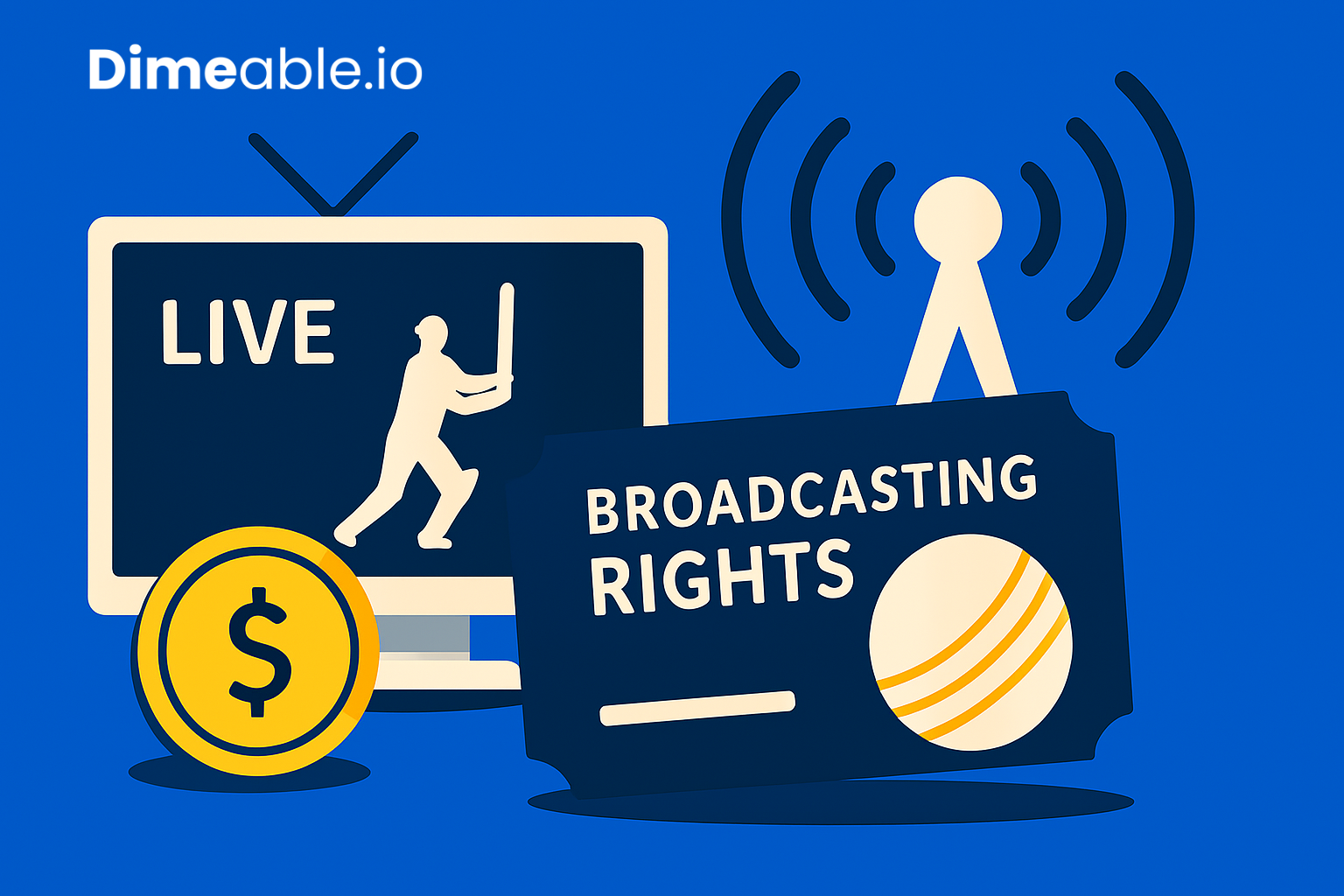Cricket is more than just a sport; it’s a financial powerhouse. And when it comes to the Indian Premier League (IPL), the money involved is mind-boggling. One of the biggest revenue streams? Broadcasting rights. The battle to air IPL matches is a billion-dollar game, shaping the future of sports broadcasting and digital media.
The Evolution of IPL Broadcasting Rights
Since its inception in 2008, the IPL has attracted massive bids from broadcasters. What started with Sony Entertainment Television securing the rights for $1.03 billion for 10 years has now evolved into multi-billion-dollar deals. Every new auction smashes previous records, proving that IPL’s commercial value only grows with time.
In 2017, Star India stunned the industry with a $2.55 billion bid for a five-year contract, gaining exclusive television and digital rights. But the real game-changer came in 2022 when the broadcasting rights were split between multiple players. The combined value of the IPL media rights for the 2023-2027 cycle hit a staggering $6.2 billion, making IPL the second most lucrative sports league globally, only behind the NFL.
Who Owns the IPL Broadcasting Rights Now?
The latest IPL media rights auction saw multiple winners:
- TV Rights (Indian Subcontinent) – Disney Star secured the television broadcasting rights for around $3 billion.
- Digital Rights – Viacom18 grabbed the digital streaming rights for approximately $2.6 billion, making IPL a battleground for digital supremacy.
- Overseas Rights – Various broadcasters secured rights in different regions, ensuring a global audience.
This split broadcasting model benefits both the league and fans, making IPL accessible across different platforms while driving higher ad revenues.
The Role of Digital Streaming in IPL’s Growth
The rise of digital platforms has changed how people consume sports. With cheaper data rates and smartphone penetration, digital streaming has emerged as a strong competitor to traditional TV broadcasts. Platforms like JioCinema and Hotstar have set new benchmarks for online viewership, clocking record-breaking numbers every season.
With advertisers shifting focus to digital ads and interactive content, IPL’s digital rights have become as valuable as TV rights. This trend is expected to reshape the future of sports broadcasting globally.
Why Are IPL Broadcasting Rights So Expensive?
- Massive Viewership – IPL attracts over 500 million viewers every season, making it a goldmine for advertisers.
- Advertising Revenue – Prime-time slots and high engagement levels allow broadcasters to charge premium ad rates.
- Global Fan Base – With international players and franchises, IPL enjoys worldwide viewership, expanding its revenue potential.
- Brand Partnerships & Sponsorships – Broadcasting rights holders earn through sponsorships, making the investment highly profitable.
The Future of IPL Broadcasting
With every auction cycle, the competition for IPL rights intensifies. The next few years could witness:
- Higher Digital Dominance – Streaming platforms may eventually outbid traditional TV broadcasters.
- Subscription-Based Models – More exclusive content for paid subscribers.
- Global Expansion – Increased focus on international audiences, leading to higher overseas revenue.
One thing is certain: IPL’s broadcasting rights will continue to be a financial juggernaut, with record-breaking deals shaping the future of sports media.
FAQs
1. Who currently holds IPL broadcasting rights?
Disney Star holds the TV rights, while Viacom18 has the digital streaming rights for IPL 2023-2027.
2. How much was the latest IPL broadcasting deal worth?
The latest IPL media rights deal (2023-2027) was valued at approximately $6.2 billion.
3. Why are IPL broadcasting rights so expensive?
The massive global viewership, high advertising revenue, and brand sponsorships make IPL broadcasting rights highly valuable.
4. Will digital platforms eventually replace TV for IPL broadcasting?
With increasing digital consumption and interactive features, streaming platforms may become the dominant broadcasting medium in the future.
5. What impact does IPL broadcasting have on cricket’s economy?
The massive media rights revenue boosts franchise earnings, player salaries, and overall cricket development.
Also Read: Profit & Loss in IPL: Which Teams Score Big and Which Strike Out?


